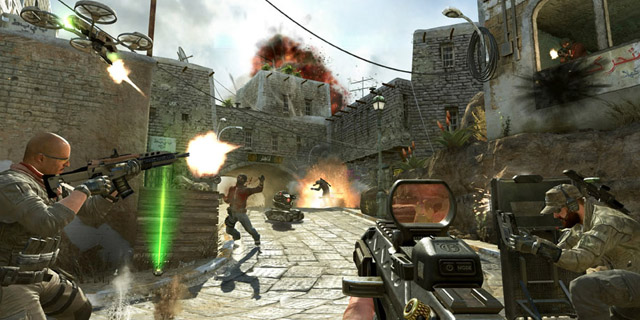
When you think about the Call of Duty franchise, you think about the explosion-filled campaigns, the intense firefights and the increasingly popular competitive multiplayer. You may also think it’s a franchise that is beginning to show its age and is in desperate need for something fresh.
Black Ops II, Treyarch’s latest in the bombastic FPS franchise, is the first time the series has seen a new coat of paint in quite a while. It’s still what you might expect from a game called Call of Duty, but it offers a surprising glimpse into a direction that would be beneficial to the series in the long run.
The campaigns in these games are usually my main focus, as they provide me with an interesting, if not flawed, narrative and some cool characters along with the gunfire and explosions that every mission is bound to provide. Black Ops II has all of that, but it also features many firsts that I hope become mainstay in the series from this point forward.
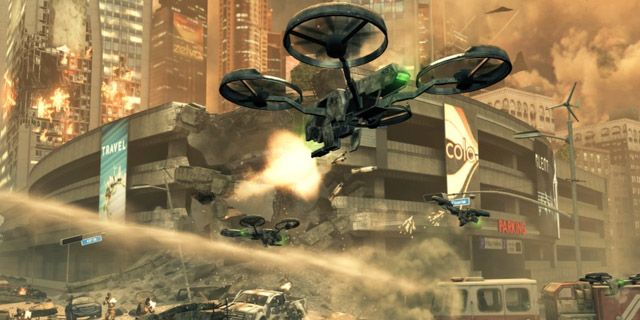
The story itself is deeply personal, focusing on David Mason, son of Alex Mason, the main protagonist from the original game, and the central villain, Raul Menendez. The story jumps from past missions with Alex and his friend Frank Woods to 2025, where David Mason is attempting to uncover the history between his father and Menendez as well as put a stop to his plans to, as expected, send the world into an potentially endless global war.
There is an ongoing conflict throughout the narrative, but it is far from the focus. This is a deeply personal story about Menendez, the Masons, and Frank Woods. It does head in some predictable directions at times, but there are plenty of shocking and, surprisingly enough, highly emotional moments scattered throughout the story.
It’s the first time since the original Modern Warfare that certain events completely took me by surprise, and not just in a typical “blow everything up Call of Duty style” kind of way. Menendez is evil, that part is obvious, but the details behind his past with Alex Mason and Frank Woods highlight his motives and make him a villain you both love to hate as well as sympathize with. It’s a fascinatingly detailed story that might stick with you longer than you would expect.
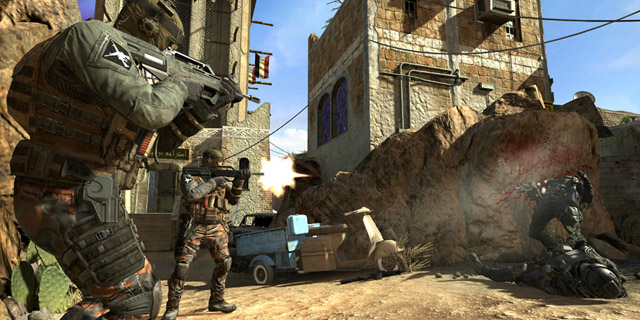
Part of the reason the campaign succeeds so well, and also one of the big changes, is the addition of player agency. This industry is all about player choice these days, but the last place you might expect to see it is in a Call of Duty game. Not only will entire scenes play out differently based on your choices, but you might even get an entirely different ending. Some of these are fairly obvious, such as the choice to kill someone or let them live, but others aren’t made clear to you until the very end. This is one of the best things Treyarch could have added to the formula; this, along with the improved story, makes this campaign the best the series has had in years.
Another promising addition to the campaign is an optional set of missions known as Strike Force missions. These put you in control of a squad of troops (and drones) in order to complete a short set of objectives in a limited amount of time. The objectives range from defending a convoy as it moves through the desert to attempting to take control of an enemy base.
While you can take direct control of any individual unit whenever you want, the key is to use the tactical view in order to maintain eyes on the entire battlefield and order your troops around. This gives you ample opportunities to put your Call of Duty skills to the test, while also keeping an eye on things from above to make sure your units are keeping things running smoothly.
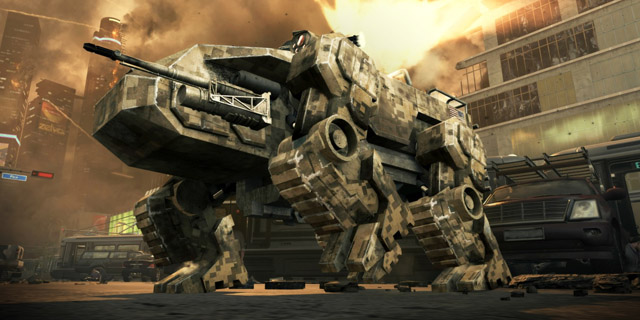
The core of these missions is enjoyable enough, but the A.I. is awful and tends to never work when you want it to. Your teammates will often never follow orders or simply not proceed where you want them to. After a while I just found myself taking control of random units and playing it like another Call of Duty level.
It’s a fantastic idea and there’s still fun to be had, but with some major improvements this mode could have really added another new layer to a campaign full of smart changes. These missions, if ignored, will have an impact on the main story, but it isn’t a major one, so skipping them isn’t a huge problem if you find yourself getting frustrated with them.
Treyarch’s signature zombie killing mode, creatively titled Zombies, is back and the same as ever before. This is a mode that I have never been able to have much fun with despite my love of other, similar modes in shooters (Horde mode in Gears of War comes to mind immediately). For those who want it, Zombies is as good as it’s ever been here, and with four maps each with their own particular objectives, there is a decent amount of variety to keep people busy. For some, this is the reason to buy Treyarch’s Call of Duty games, but there isn’t enough content here to hold people over for too long and this mode always felt like a poor Spec Ops replacement.
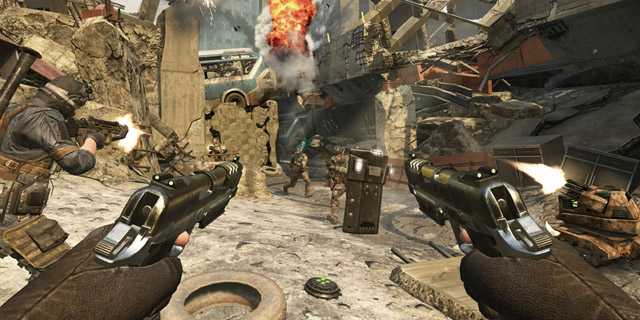
Last, but certainly not least, is the competitive multiplayer. At its core, Call of Duty’s multiplayer is still considered to be the finest in the industry, despite relatively few changes from game to game. There are new modes, maps, weapons, and subtle tweaks here and there, but the central experience of playing these games online has been relatively the same since the original Modern Warfare.
It’s still as fun as you would expect to be, even if it is showing its age. You level up, you create classes, you earn bonuses from doing well in matches; if you’ve ever played a Call of Duty game before, you know exactly what to expect. Thankfully, Treyarch has made some smart changes this time around to keep things from getting too stale.
The biggest and most important change is how classes work. Typically, once you created a class, you would assign it different weapons, attachments, and perks. This time, however, you are given ten slots to work with for each class you create, meaning you can shift the balance a bit, which allows for more customization and gave me more reason to create multiple classes. For example, if you wanted one class to focus more on having as many perks as possible, you can use more of your open slots to fit more perks in, leaving you with the bare minimum for weapon attachments.
As you level up, you unlock tokens which allow you to pick and pick and choose your weapons, attachments, perks, etc. The class customization is still what you would expect despite these changes, but this adds a new twist on a well-worn formula and allows for a bit more customization for your created classes.
As it stands, Call of Duty is still a lot of fun. While the past couple of games have played things as safe as possible, Black Ops II has one the most exciting, creative and downright fun campaigns in the series to-date. While I’ll never understand the appeal of Treyarch’s Zombies mode, and the multiplayer is still essentially the same as it’s ever been (with some smart improvements), this is a step in the right direction for a franchise that seems destined to continue on being one of the biggest in the industry. Let’s hope next year’s game, potentially the first on entirely new hardware, continues this positive trend.
Pros: Well-executed story, strong use of player agency, multiplayer is as fun as ever
Cons: Flawed A.I. and tactics in strike force missions, Zombies mode is a bit dull



















